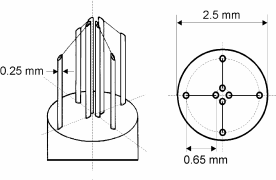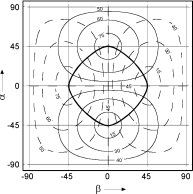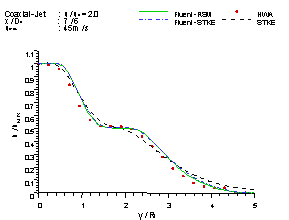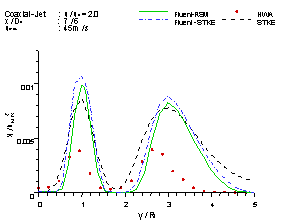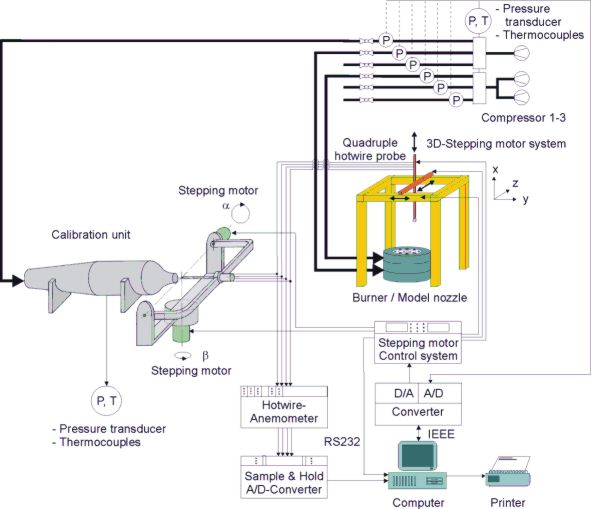Thermal Anemometry / Hot Wire Anemometry
Thermal Anemometry (TA) or Hot Wire Anemometry (HWA) is a very accurate measurement technique for investigations of fluid mechanics within Mechanical Engineering, Aeronautical Engineering, Chemical Engineering, Civil Engineering, Oceanography and Experimental Physics.
Numerous previous investigations proved the suitability of HWA for velocity and concentration measurement in isothermal, or rather semi-isothermal models of technical burners and furnaces. It allows the experimental determination of extensive data sets for the validation of turbulence models. Turbulence models are of great importance for the mathematical simulation of turbulent reacting flows or combustion processes.
At the Department of Energy Plant Technology a modern Hot Wire Measurement System with four channels is available. The advantage of the software controlled configuration of the Hot Wire Probe is supplemented by the automation of the calibration and the experimental procedures. A special apparatus has been developed for the construction and repair of complex Multi Hot Wire Probes, which has proven its worthiness at different probe geometries for several years.
The principle of HWA is based on the convective heat transfer from a thin electrically heated wire (1-5 mm) placed in a fluid flow. Consequently any change in the fluid flow condition (velocity, temperature) has an influence on the heat transfer. HWA is capable of measuring instantaneous three dimensional turbulent motion in gases with very high accuracy and in real time. With statistic and mathematical methods the averaged velocities, turbulent velocity fluctuations, turbulent correlation, turbulence intensities, the distribution of eddy sizes and unsteady effects like intermittence may be recorded.
Velocity measurements are usually carried out in the Constant Temperature Anemometry (CTA) mode. Another Hot Wire (driven in the Constant Current Anemometry (CCA) mode as a resistance thermometer) can be added to the probe to determine velocity and temperature simultaneously. The combination of the two techniques allows the experimental determination of the three dimensional velocity vector and the temperature. Hence the investigation of the turbulent scalar transport of a species is possible. The expansion characteristics of a heated jet in a model burner is proportional to the expansion characteristics of fuel in the real burner mixing field.
